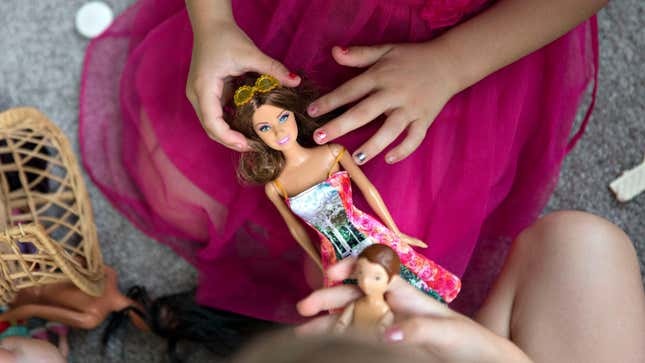Barbie Helped Me Navigate the World of Girls
As a queer, autistic kid, my obsession with Barbies helped me approach friendship and femininity without fear of rejection.
In Depth
Photo: Daniel Acker/Bloomberg
One summer evening when I was 6, I had a fight with my mother and decided to run away from home. I packed two fruit crates with the only thing I considered necessary for my survival: my collection of Barbies.
I made it as far as our battered Renault 5 parked in the driveway and set up camp in the back seat, surrounded by Barbies and all their accessories. After an hour or two of sulking, my mother, trying very hard not to laugh at my makeshift camp, coaxed me home with the promise of chicken nuggets and french fries. I have no idea what the fight was about, but one thing was clear: When the shit went down, it was me and my Barbies against the world.
As a very young child who people readily identified as a girl, I received multiple gifts of baby dolls, many with their own strollers. Most, if not all, of these were rejected without a second thought. But sometime around 4 or 5 Barbie found her way into my life, and it was love at first sight. Love, fueled by daytime TV advertising and my compulsion for collecting, soon turned into obsession.
One of the most pervasive stereotypes about autistic children is that we’re supposed to like trains. If we fail to show an interest in trains we may even risk not meeting the diagnostic criteria for autism. I have nothing against trains—in fact, I love a good ride—but Barbie was all I had time for. As obsessions go, I was in good company. There was hardly a girl my age who didn’t play with Barbies, and so the intensity of my special interest, as well as my undiagnosed autism, went unnoticed.
Barbie was more than just a doll to me: She kept me company in a world where making friends with girls was extremely difficult. I was content to spend hours alone, imagining fantasies for us to share. When I did attempt to make friends with other girls, Barbie helped me connect through play that was focused on doing her hair, dressing her up, and acting out adventures. Under these conditions, my propensity to misunderstand the rules of being a girl, to say or do the wrong thing, often went unnoticed. Barbie became a safe way to practice being in that world without the rejection and exclusion that my social faux pas might’ve caused. Still, I preferred to play alone.
-

-

-

-

-

-

-

-

-

-

-

-

-

-

-

-

-

-

-

-

-

-

-

-

-

-

-

-

-

-

-

-

-

-

-

-

-

-

-

-









































